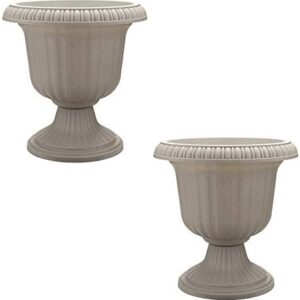Have you ever brought a beautiful indoor plant into your home, only to watch it slowly wither away despite your best intentions? Don’t worry, you’re not alone. Many people struggle to keep their indoor plants happy and healthy, but with the right care routine, you can maximize the benefits of having greenery indoors.
Indoor plants not only brighten up your space and add a touch of nature to your home, but they also have numerous health benefits. They can improve air quality by removing toxins and increasing oxygen levels, reduce stress and boost your mood, and even help you focus better and be more productive. So, it’s definitely worth the effort to keep your indoor plants thriving.
To help you get started on the right track, here is an overview of a care routine that will maximize the benefits of your indoor plants:
1. Choose the right plants: Before you even bring a plant home, it’s important to choose the right ones for your space. Consider factors like the amount of light your space gets, the humidity levels, and how much time you can commit to caring for the plant. Some plants require more attention than others, so choose ones that fit your lifestyle.
2. Provide proper lighting: One of the most important factors in plant care is providing the right amount of light. Most indoor plants need indirect sunlight, so place them near a window where they can get some natural light. If your space doesn’t get much sunlight, consider investing in grow lights to supplement their light needs.
3. Watering: One of the most common mistakes people make with indoor plants is overwatering. It’s important to let the soil dry out between waterings to prevent root rot. Stick your finger into the soil about an inch deep – if it feels dry, it’s time to water. Make sure to water evenly around the plant and avoid getting the leaves wet to prevent mold and mildew.
4. Humidity: Indoor plants often thrive in higher humidity levels, especially tropical plants like ferns and palms. If your space is dry, consider misting your plants regularly or placing a humidifier nearby. You can also create a humidity tray by placing a shallow dish filled with water and pebbles under your plant to increase the moisture in the air.
5. Fertilizing: Indoor plants need nutrients to grow and thrive, so it’s important to fertilize them regularly. Choose a balanced liquid fertilizer and follow the instructions on the label. Typically, you’ll want to fertilize your plants every 4-6 weeks during the growing season (spring and summer) and reduce or stop fertilizing in the winter when plants are dormant.
6. Pruning and grooming: Regularly prune and groom your indoor plants to keep them healthy and looking their best. Remove any dead or yellowing leaves, trim back overgrown branches, and repot your plant when it outgrows its container. Grooming your plants not only improves their appearance but also encourages new growth.
7. Pest control: Keep an eye out for pests like aphids, spider mites, and mealybugs that can infest your indoor plants. If you notice any signs of pest damage, treat your plant with natural remedies like neem oil or insecticidal soap. Regularly inspect your plants for pests and take action promptly to prevent infestations from spreading.
By following this care routine and giving your indoor plants the attention they need, you can maximize the benefits of having greenery indoors. Not only will your plants thrive and enhance your space, but you’ll also reap the numerous health benefits they provide.
So, next time you bring a new plant home, remember to choose the right ones for your space, provide proper lighting, water and fertilize regularly, prune and groom your plants, and keep an eye out for pests. With a little TLC, your indoor plants will flourish and bring joy and beauty to your home.






